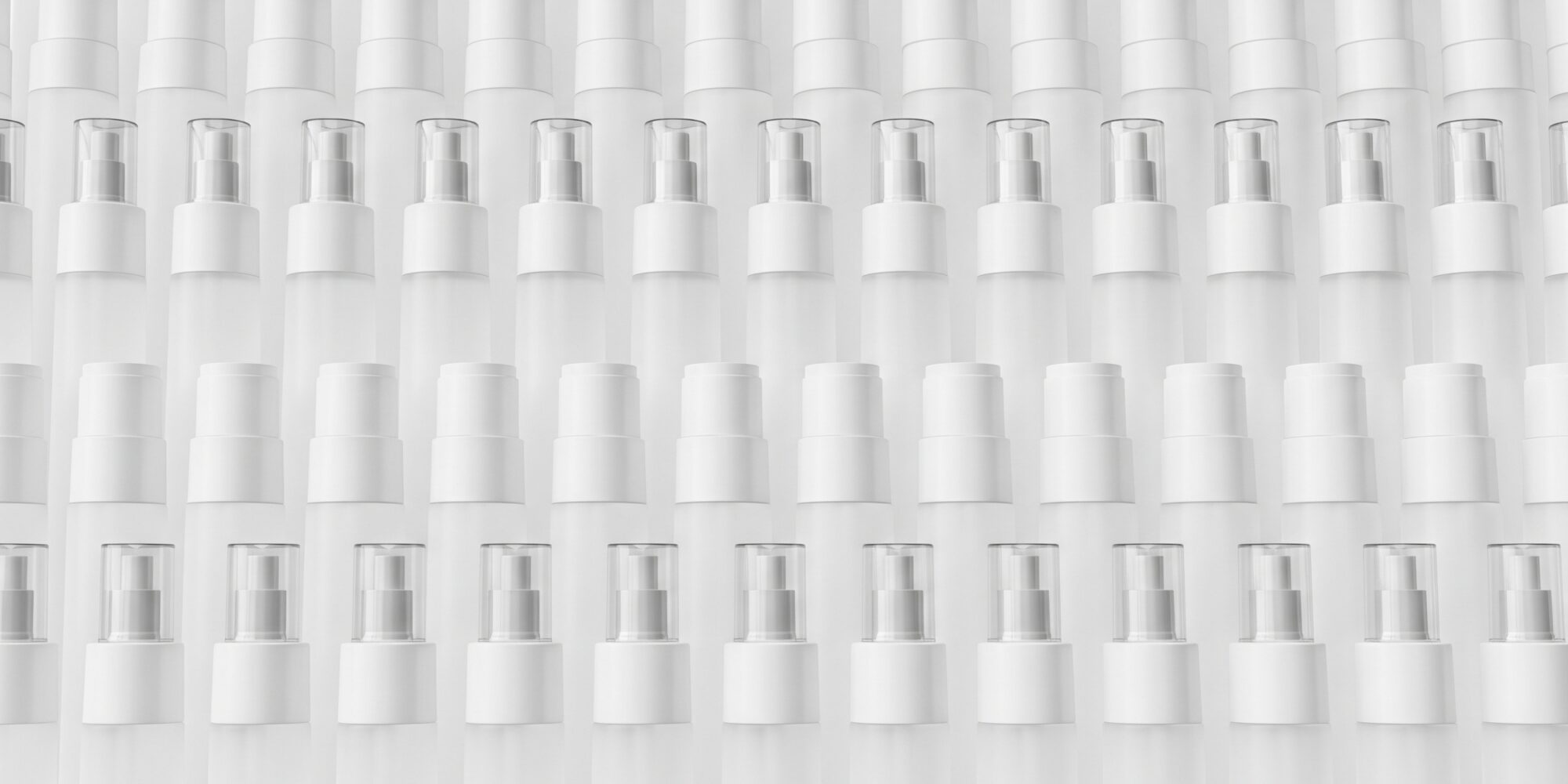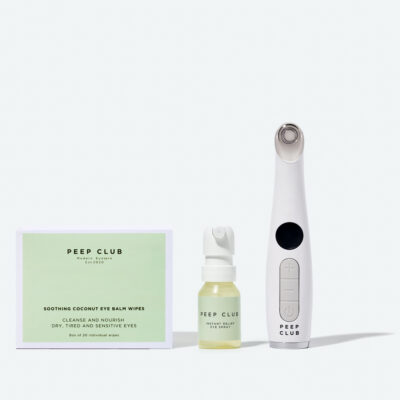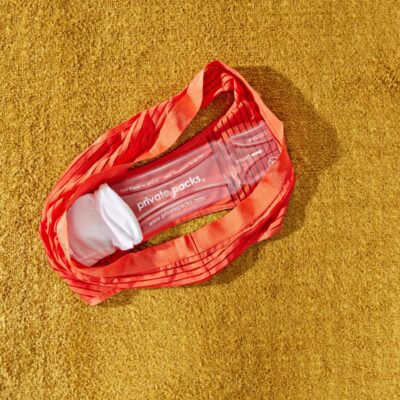
Does Beauty Product Innovation Have An AI Slop Problem?
Beauty industry expert and consultant Lorne Lucree believes the beauty industry is stuck in a largely uninspiring product launch cycle he compares to what’s happening with artificial intelligence.
“There’s this flood of content and tools that look polished and check all the right boxes, but lack real depth or differentiation. It’s slop. Technically fine, but soulless,” he says. “And I think that’s where a lot of skincare is landing too: clean, attractive and perfectly forgettable.”
We were wondering if Lucree’s sentiments are widely held. So, for the latest edition of our ongoing series posing questions relevant to indie beauty, we asked nine beauty entrepreneurs, cosmetic chemists, investors and product developers the following: Do you agree that beauty product launches on the whole now are akin to AI slop or content that’s professional, but generic? How do brands stop their launches from getting caught in the AI slop rut? Do you think the beauty industry will get out of it?
- Krupa Koestline Founder and Cosmetic Chemist, KKT Innovation Labs
Absolutely, I agree with Lorne’s sentiment—and I’d even take it a step further. Too many beauty launches today feel like they’ve been algorithmically generated: trend-chasing, buzzword-heavy and painfully safe. Clean? Check. Clinically tested? Check. Vegan, microbiome-friendly, sustainably packaged? Check, check, check. But where’s the soul? Where’s the why? A lot of these products feel like they could belong to any brand, which means they belong to no brand at all.
This is the direct result of development driven by timelines and templates instead of intention. Founders are under pressure to launch fast, and many lean heavily on turnkey labs or stock formulations that haven’t been meaningfully reimagined. The result is a cycle of “new” launches that all feel eerily familiar—because they are.
To break out of the rut, brands need to lead with purpose and take formulation seriously. At KKT Labs, we work closely with founders to disrupt this cycle. We partner with brands to translate their vision into something intentional and ownable.
That means asking harder questions up front: What do we really want this product to do? What skin physiology are we targeting? Can we innovate on the delivery system, the base, the user experience? That’s where real innovation happens, and it’s what sets a product apart in a saturated market.
Will the industry get out of this? I’m hopeful, but only if we stop rewarding speed and sameness and start valuing integrity, ingenuity and impact. There’s still white space for brands who dare to dig deeper.
- Rachel Hirsch Founder and General Partner, Wellness Growth Ventures
Lucree’s “AI slop” analogy is spot on, but I'd argue the core issue is incentive misalignment. Founders were often building toward a raise, not toward a repeat customer. That’s not always a fault of the founder, it’s a product of the ecosystem.
When capital was abundant, we celebrated fast followers with sleek branding. Now that capital is constrained, we’re realizing just how few of those brands built the muscle for sustainable scale: ops, margin, LTV and retention.
And here’s the other under-discussed layer: The consumer has evolved faster than the category. Today’s shopper is more educated, more skeptical and increasingly aware of marketing science versus real science.
It’s no longer enough to say “clinically backed,” people want the data. And it’s no longer compelling to say “inclusive,” people want brands built by and for their actual lived experience, not a stock photo marketing deck.
The good news? This reset will clear the way for something better. The brands that thrive next will be led by operators as much as visionaries. They’ll build not just for the shelf, but for deep, lasting community. They’ll focus less on blanket claims and more on bio-individuality, tapping into longevity, hormones, cycle syncing and internal health as levers for external beauty.
This is the reckoning that gives space for brand launches to get noticed, an opportunity for the beauty industry to get out of its "AI slop.”
- Perry Romanowski Founder and Cosmetic Chemist, Element 44 and Chemists Corner
Lucree makes some good points, but I don't think AI slop is exactly the right analogy. To me, AI slop refers more to low-quality, nonsensical content generated by AI. The term describes content that is repetitive, poorly written or lacks substance.
While the beauty products of today are often derivative, for the most part they are high quality, and they solve the problems they are meant to solve. The biggest difference between the problem that faces the beauty industry and AI slop is that you can't actually make better beauty products. You can make content that is better than what AI churns out (at least for the moment).
What Lucree is getting at is a sense that all the new launches are just rehashing of old products, and I agree that is pretty much true. But there are a few good reasons for that.
- No significant new discoveries—Beauty products have not had any significant innovation in the last few decades because we haven't really found anything new. The detergents that are used in shampoos have been around since the 1950s and 1960s. Sure, we've found better, cleaner ways to make them but the main molecules are the same. Similarly, moisturizers, color cosmetics, perfumes...innovation has all been iterations of what already exists.
- Consumers don't notice subtle differences—Even though there have been a few innovations, consumers are just not very good at noticing them. Whether they like how a product works or not is much more dependent on things like fragrance, packaging, price, brand story, etc. The technology has gotten to a point where it's about as good as it can be. There is no point in trying to get better, even if you could, because technology doesn't sell products. Marketing, packaging and fragrance sell products.
- Most successful brands are marketing stories—In the beauty business, marketing sells, not technology. You can make products that are "good enough," but if you have a compelling marketing story, you're going to sell. Kylie Cosmetics was no different in terms of technology than any other product out there, but it was nearly an overnight billion-dollar brand. Drunk Elephant did not make products that were technologically superior to everything else out on the market. They just had a compelling marketing story and branding that prompted Shiseido to buy them for >$840 million.
Considering those factors, there is no compelling reason to invest in developing substantially new technology. The money is better spent trying to come up with compelling new marketing stories.
I don't think brands can stop their launches in the AI slop rut, and, honestly, I don't think they need to. What they need to do is to develop products that score well in home use tests (blinded consumer testing) and then focus on making compelling marketing stories.
Beauty products are much more like the movie industry where every story has been told, and just like with movies, there are a lot of sequels that are different, but really the same. Every product has been made, but, to be successful and satisfy consumers, companies have to focus on more clever marketing stories and ads. They need to make people identify with their brands in the way that Apple makes people identify with their brand.
I think the beauty industry will continue to work the way it has always worked. Companies will come out with new iterations of products that fundamentally work the same as previous products, but consumers are always looking for the next "new" thing. And if the marketing, fragrance and packaging is right, they will find a receptive audience.
Beauty products are about more than just how well a skin moisturizer makes skin feel or a hair shampoo cleans hair. They are about an experience and how the products make people feel. The story of the product is just as important to impacting how people feel as the technology.
- Kelly Dobos Consultant Cosmetic Chemist
I understand Lorne's frustration, and I share it. Brands are under pressure to launch quickly to stay relevant today. That often means relying on white-label formulations or tweaking existing formulations rather than investing in true R&D.
Many launches are also reactive, jumping on the latest ingredient or formulation trend without a deeper purpose or differentiation. And tools that generate branding, copy and even formulations may be efficient, but they can also lead to sameness. When everyone uses the same data and tools, the outputs are bound to converge.
To break this cycle, brands need to dedicate resources to innovation, gathering deep consumer insights and investing in formulation science that delivers discernable performance. Chemists need more time to experiment rather than just follow recipes.
AI and automation can support ideation, but they can’t yet replace the nuanced thinking and creativity that comes with deep technical expertise. That being said, creating truly disruptive innovation is hard, and it’s incredibly rare.
Some of the most groundbreaking inventions in history have come from accidental discoveries, but it’s not just luck. It also takes experience and knowledge to recognize, understand and capitalize on those discoveries.
- Krissie Gerrard Owner, Envy Cosmetic Consulting
From the consumer-facing side, I agree that product launches have become generic with brands trying to repeat the success of other brands or products they have seen, jumping on trends, copying ingredient callouts and percentages, and displaying similar aesthetics.
However, as a chemist and product developer, I find every product launch insightful because there is often technology or ingredients in the product that are missed marketing opportunities.
You can have a generic product at face value say a lactic acid lotion, but maybe a fragrance fixative was added to eliminate odor typically associated with lactic acid or a polymer was included that enhances efficacy of lactic acid.
A brand can speak to the free acid value rather than lactic acid percentage and use that as an educational moment. It's about taking the view from the lab bench and making sure it doesn’t get lost in translation when the product launches.
Skincare brands can look to other facets of the beauty industry. Having worked at a beauty incubator that had fragrance, skincare, body care, haircare and color brands managed by the same team, I saw crossover between categories I otherwise would not have seen.
Currently, there is the “skinification” of everything from haircare to fragrance to oral care, but I think skincare needs to learn from these categories and at times be viewed from the lens of a different category. Innovation can be seen through unique ingredients, formats, clinical testing, packaging and more. Beauty categories shouldn’t be siloed.
I think the beauty industry will get out of the AI slop rut as people search for authenticity and relatability. As a millennial, I find myself becoming more nostalgic. Certain colors, textures, marketing, fragrances and packaging bring me back to a simpler time.
I think nostalgia brings with it a nod to the imperfect. It is authentic and genuine not clean or sterile. Brands will want to capitalize on shared human experiences and memories which is the antithesis of the soulless and polished product landscape we have now.
- Milan Scott CEO and R&D Chemist, Keseana Labs
I actually do agree with Lorne's statement that many product launches are seemingly well-branded, but lacking true innovation or purpose. There's been a flood of clean, minimal brands that all kind of start to blend together.
With that said, I try to focus on the brands that are pushing boundaries like the ones with a clear market differentiation and a genuine reason to exist. These brands aren't just launching products for the sake of launching. They're solving real consumer problems and filling overlooked gaps in the market.
I always tell my clients that, if you're just launching a product that you think might be a hit, but your actual audience isn't even asking for it, you're not innovating. You're wasting time, money and materials.
Being deeply tied into your audience is essential. That connection and community should guide every decision in the product development process so that you're truly filling a gap for your audience and solving real, validated needs.
When brands are feeling stuck in that "slop" phase, I think it is important to figure out what problem you're actually trying to solve. Then, think of ways to bring a fresh angle to it. Brands could use an ingredient or product form in a new way. They could develop a proprietary blend, or they can tap into early-stage supplier innovations at conventions and trade shows.
I do think the beauty industry can get out of this rut, but I think it'll take more brands willing to lead with intention, prioritizing quality over quantity with fewer product launches and more intentional products.
- Victoria Vohland Founder and Head of Product Development, Green Labs Consulting
Yes, I agree with Lucree, and I’d take it a step further. A large portion of launches today feel like they were created by committee rather than conviction. There’s a rush to meet trend checkboxes—"clean," "clinically proven," "sustainable packaging"—but the soul of the product often gets diluted in the process.
I’ve seen brands try to shortcut product development by copy-pasting what’s already out there, relying on generic stock formulations and templated messaging. The result is technically sound but emotionally vacant.
It starts with restraint and intention. Don’t chase every trend. Build from your unique vantage point. What insight, experience or pain point do you have access to that others don’t? Develop from there.
Also, be willing to go deeper in your product development: harvest your own ingredients, challenge default inputs, formulate for results before buzzwords. And, above all, have a point of view. Consumers don’t remember claims, they remember how your brand made them feel.
I think we’re at a tipping point. AI and white-label systems will continue to raise the floor, but not the ceiling. The brands that will stand out are the ones that slow down, build vertically and infuse more real-world texture into their offerings. That might mean less volume, but more impact.
We’re already seeing consumers question the glut of "clean" launches and seek products with authenticity and craft. The industry can evolve, but it requires more founders to stop copying, start listening and build something only they can.
- Deverey Kirk Founder, Skinformation
The beauty industry's “slop” problem existed long before AI. We need to stop being driven by flawed incentives: chasing aggressive revenue targets with empty newness and following trends/competitors instead of focusing on genuine customer needs. This creates a flood of products that say nothing because they solve nothing.
How do brands escape the rut? Through unflinching accountability for new products and zero tolerance for SKU proliferation.
This is the framework we use:
- Does the world genuinely need this product? Are we solving a real, unmet need, or just adding to the noise?
- Can this be the undisputed best in its class? We have zero interest in making another version of something that already exists. A new product must be a standalone hero from day 1.
- Will this deliver a tangible, undeniable result? Efficacy is our North Star. If the benefit isn't profound, the product doesn't deserve to exist.
That single-minded focus on solving a real problem, with a best-in-class solution, is the creative engine behind every decision. It's our ultimate “slop” antidote.
This is where indies will shine. The ability to deliver authenticity, creativity and curation is what cuts through the noise.
- Flavia Zhamo Founder and CEO, EC Studios and Noun Connect
The beauty industry is saturated with well-branded, similarly formulated products that ultimately blur together. Too often, brands are racing to launch on trend instead of on purpose, chasing aesthetics and algorithms over originality or deep formulation work. Most launches today are optimized for marketing, not meaning. And consumers are feeling that fatigue.
At Noun, we believe the antidote is intention. Brands can avoid the rut by working with formulation and manufacturing partners who prioritize innovation and purpose from the start, not just replicating what’s worked before. But doing that requires rethinking how products are made. The current system rewards speed over substance, and too many brands are trapped in a supply chain that prioritizes sameness.
At Noun, we’re working to flip that model, making it easier for brands to collaborate with forward-thinking manufacturers, access novel concepts and ingredients to bring bold ideas to life quickly without compromising quality.
If you have a question you'd like Beauty Independent to ask beauty entrepreneurs, cosmetic chemists, investors and product developers, please send it to editor@beautyindependent.com.






Leave a Reply
You must be logged in to post a comment.